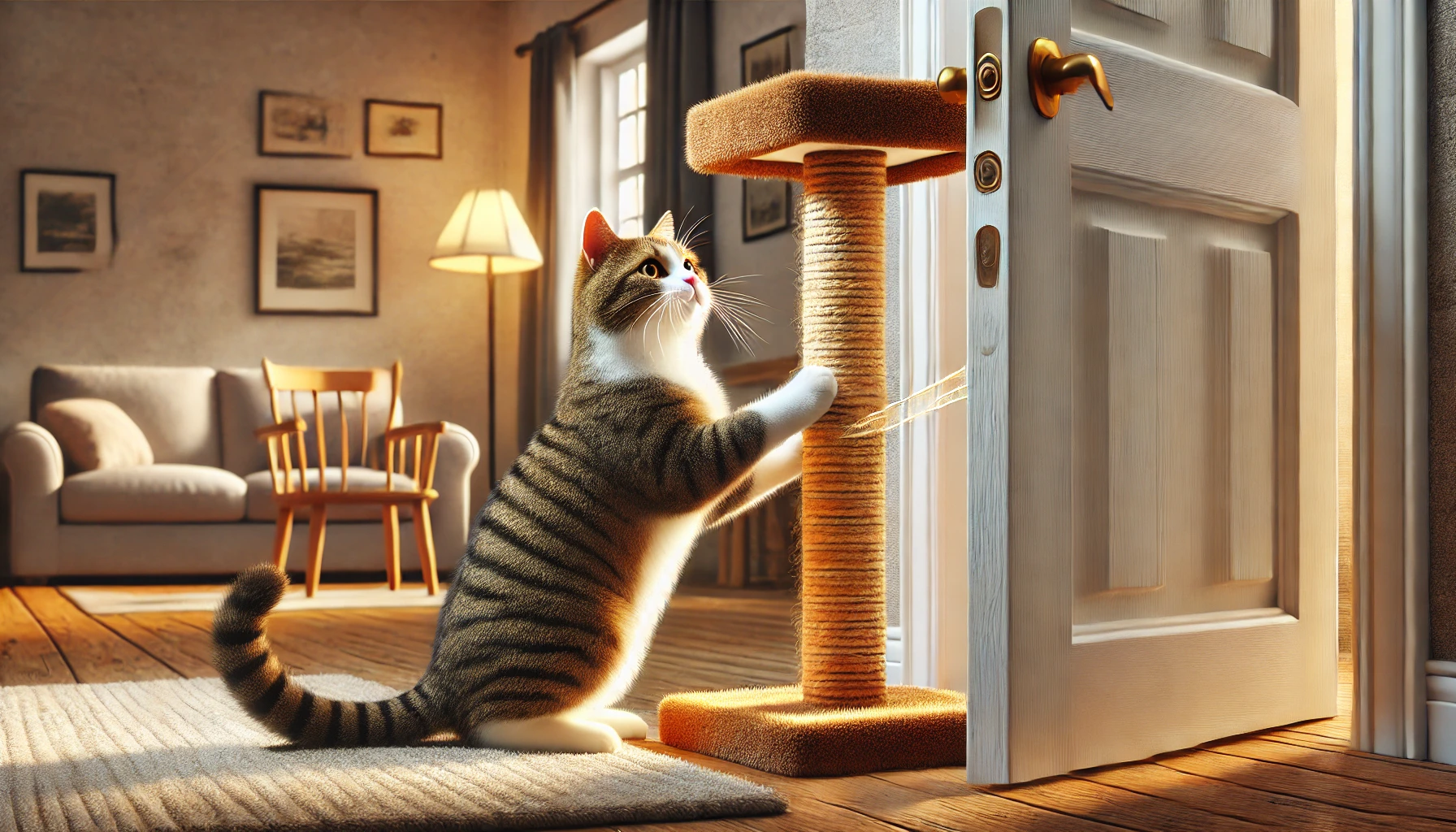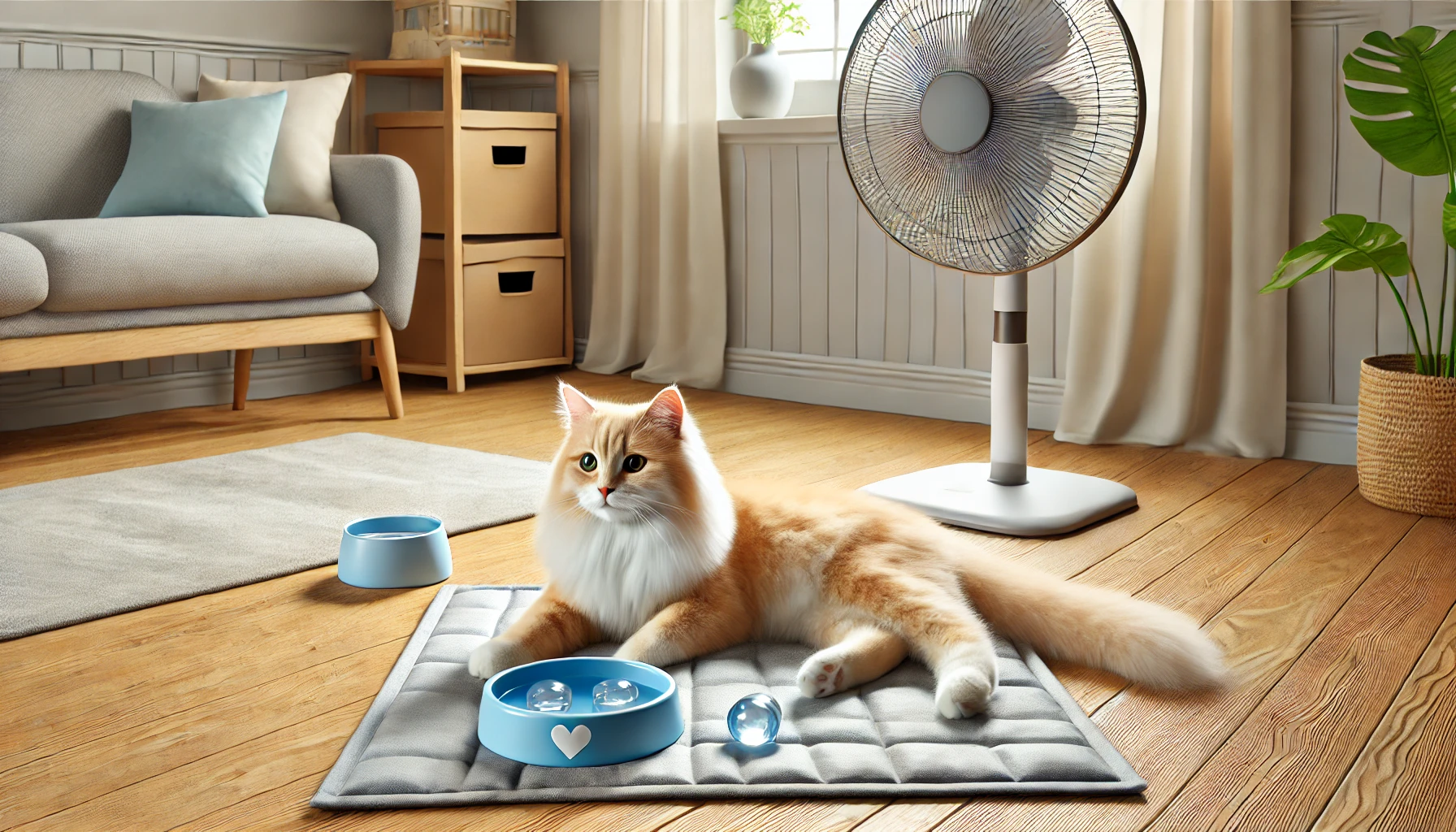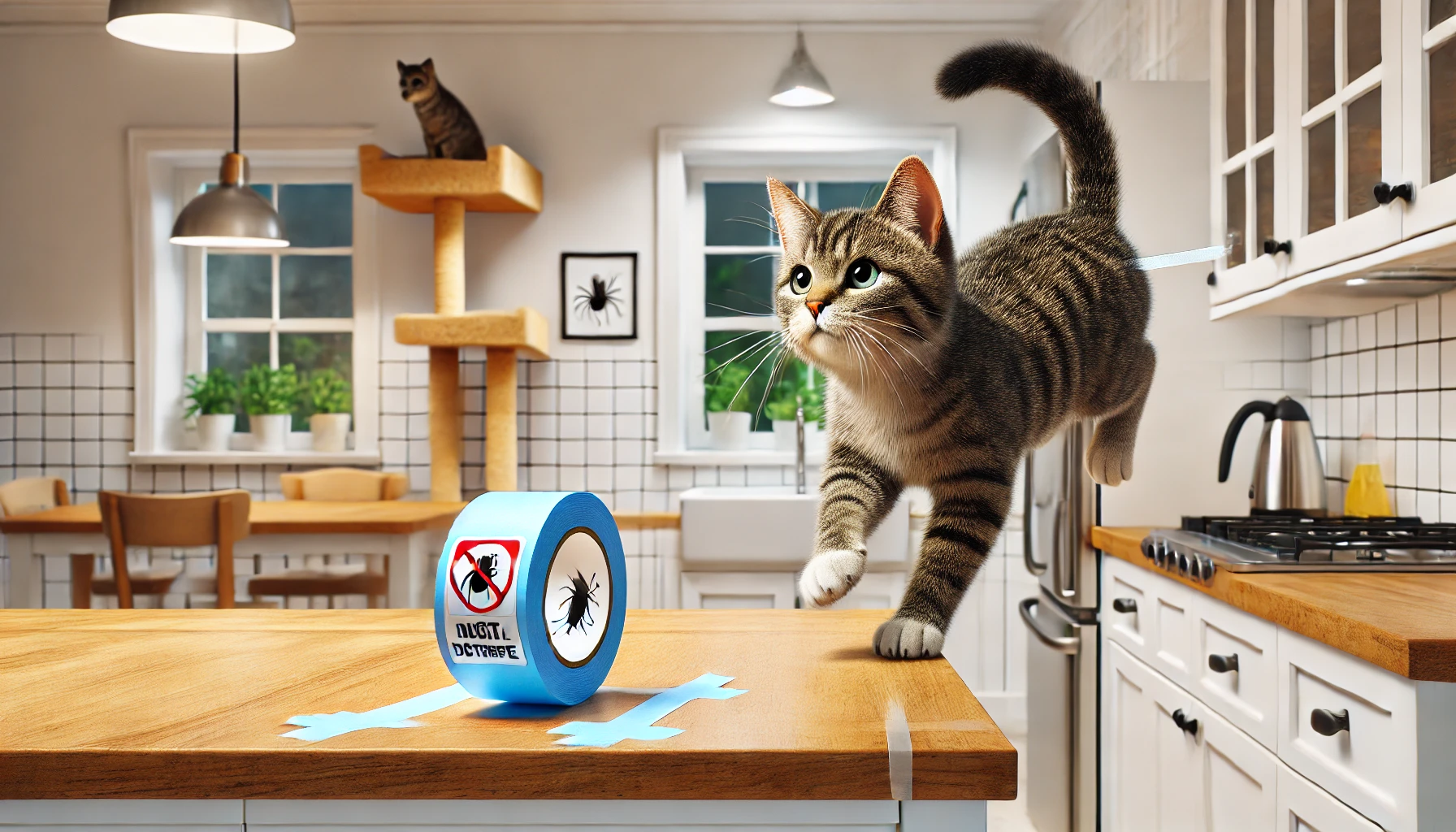Scratching is a natural and necessary behavior for cats, but when they start damaging doors and walls, it can be frustrating. Instead of punishing them, the key is to redirect their scratching to appropriate places while understanding the reason behind it.
In this guide, you’ll learn why cats scratch doors and walls and how to stop this behavior effectively.
1. Understand Why Your Cat Scratches Doors and Walls
Cats don’t scratch just to be destructive—there’s always a reason.
✅ Common Reasons Cats Scratch Doors and Walls:
✔ Marking Territory – Scratching leaves scent and visual marks.
✔ Boredom or Lack of Stimulation – Cats scratch to release energy.
✔ Seeking Attention – If scratching gets a reaction, they repeat it.
✔ Trying to Open a Door – Some cats scratch because they want inside.
✔ Nail Maintenance – Keeps claws sharp and healthy.
🚨 Common Mistake: Scolding or punishing the cat.
Instead: Redirect their behavior to an acceptable scratching surface.
2. Provide a Better Scratching Alternative
If your cat doesn’t have a proper scratching area, they will use walls and doors instead.
✅ Best Scratching Alternatives:
✔ Tall, sturdy scratching posts (at least 30 inches).
✔ Horizontal scratchers if they prefer low surfaces.
✔ Wall-mounted scratching pads near their usual scratching spots.
🚨 Place scratchers near doors or walls they already target.
3. Make Doors and Walls Less Appealing to Scratch
Cats avoid surfaces that feel unpleasant or unappealing to their paws.
✅ How to Deter Scratching on Doors and Walls:
✔ Double-sided sticky tape – Cats dislike the texture.
✔ Aluminum foil or plastic sheets – Creates an unappealing surface.
✔ Furniture-safe cat deterrent sprays (citrus, lavender, or rosemary scents).
🚨 Avoid strong chemical sprays—stick to pet-safe deterrents!
4. Use a Scratching Post with Catnip to Encourage Use
Encouraging positive reinforcement helps your cat choose the right place to scratch.
✅ How to Make Scratchers More Appealing:
✔ Sprinkle catnip or silvervine on the scratching post.
✔ Reward with treats or praise when they use it.
✔ Use toys to attract them to the new scratching area.
🚨 If your cat ignores the scratcher, try different textures like sisal, carpet, or cardboard.
5. Trim Your Cat’s Claws Regularly
Shorter claws cause less damage when scratching.
✅ How to Trim Claws Without Stress:
✔ Use cat-specific nail clippers (not human clippers).
✔ Trim just the sharp tip—avoid cutting the pink “quick.”
✔ Reward your cat with treats after each successful trim.
🚨 If your cat hates nail trims, try a scratching post infused with catnip to help wear down their claws naturally.
6. Protect Doors and Walls with Scratch Guards
If your cat insists on scratching a certain area, protect it while retraining them.
✅ Ways to Protect Doors and Walls:
✔ Install acrylic or plastic scratch guards on common scratching areas.
✔ Use removable vinyl wallpaper to protect walls.
✔ Cover door edges with clear plastic protectors.
🚨 These solutions work best while training your cat to use a scratching post.
7. Keep Your Cat Mentally and Physically Stimulated
Cats scratch more when they’re bored or have excess energy.
✅ Ways to Keep Your Cat Busy:
✔ Play with wand toys or laser pointers daily.
✔ Provide puzzle feeders for mental stimulation.
✔ Give them a window perch to watch birds or outdoor activity.
🚨 If your cat scratches for attention, increase playtime and provide interactive toys.
8. Address Door-Scratching at Night
If your cat scratches doors while you sleep, they may want attention or access to another room.
✅ Solutions for Nighttime Scratching:
✔ Ignore the behavior—do not reward it by opening the door.
✔ Provide a cozy sleeping area outside the closed door.
✔ Use white noise or a calming pheromone diffuser to relax them.
🚨 If you give in and open the door, they will learn that scratching = reward!
9. Train Your Cat with a Firm but Calm “No”
Cats respond better to redirection than punishment.
✅ How to Train Them to Stop Scratching:
✔ Say “no” in a firm, calm voice.
✔ Gently redirect them to a scratching post.
✔ Reward them when they scratch the right surface.
🚨 Never yell or physically punish your cat—this causes fear and stress!
10. Be Patient—Breaking a Habit Takes Time
Changing behavior doesn’t happen overnight, but with consistency and positive reinforcement, your cat will learn.
🐾 Signs of Progress:
✅ Scratching doors and walls less often.
✅ Using scratching posts more frequently.
✅ Responding to redirection and positive reinforcement.
🚨 If scratching continues after weeks of training, consult a vet or cat behaviorist.
Final Thoughts
Scratching is normal cat behavior, but when it becomes destructive, training and redirection can help.
🐱 Key Takeaways:
✅ Provide a scratching post near the targeted area.
✅ Make walls and doors less appealing with deterrents.
✅ Encourage the right behavior with catnip and treats.
✅ Trim claws regularly to reduce damage.
✅ Protect surfaces with scratch guards or vinyl covers.
✅ Keep your cat mentally and physically stimulated.
✅ Train with gentle redirection and patience.
With consistency and the right setup, your cat will happily scratch in the right places! 🐾💖




